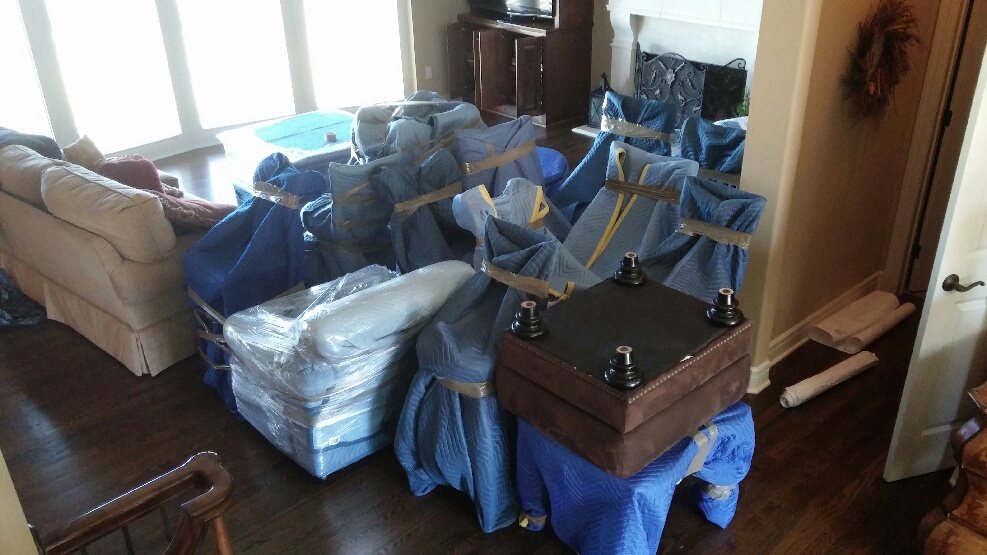30 Key Packing Tips
- Less is more! Use packing as a way to clean out belongings for donations, a yard sale, and/or the recycling center. Aim to eliminate 1/3 of your belongings. You’ll save time and expense.
- Organization 101: If you haven’t seen it, needed it or thought about it in the last 12 months….get rid of it!
- Start with out-of-season items. Next, pack things used infrequently. Leave until the last minute things you’ll need until moving day.
- Do not use masking tape or narrow cellophane tape. You will find PVC (poly-vinyl chloride) to be the most effective.
- Use newspapers only for cushioning not for wrapping items. The ink on the newspapers will rub off and can stain items such as fine china.
- Label each and every carton. Use a broad, felt-tipped marker, clearly marking room and contents. Indicate “FRAGILE” on delicates; “THIS END UP” where appropriate.
- Limit cartons to a maximum weight of 50 pounds
- Empty drawers of breakables, spillables, non-transportable items and anything that would puncture or damage other items.
- Pack similar items together. Do not pack a delicate china figurine in the same carton with cast-iron frying pans, for example.
- Keep all parts or pairs of things together. For example, curtain rod hangers, mirror bolts and other small hardware items should be placed in plastic bags and taped or tied securely to the article to which they belong.
- Wind electrical cords, fastening them so they do not dangle.
- Wrap items individually in clean paper; use tissue paper, paper towels or even facial tissue for fine china, crystal and delicate items. Colored wrapping paper draws attention to very small things that might otherwise get lost in a carton. Use a double layer of newsprint for a good outer wrapping.
- Place a two- or three-inch layer of crushed paper in the bottom of cartons for cushioning.
- Build up the layers, with the heaviest things on the bottom, medium weight next and lightest on top.
- As each layer is completed, fill in empty spaces firmly with crushed paper and add more crushed paper to make a level base for the next layer, or use sheets of cardboard cut from cartons as dividers.
- Cushion well with crushed paper; towels and lightweight blankets may also be used for padding and cushioning. The more fragile the item, the more cushioning needed. Be sure no sharp points, edges or rims are left uncovered.
- Pack small, fragile, individually-wrapped items separately or a few together in small boxes, cushioning with crushed or shredded paper.
- Place small boxes in a single large box, filling in spaces with crushed paper.
- Avoid overloading cartons, but strive for a firm pack that will prevent items from shifting; the cover should close easily without force, but should not bend inward.
- Seal cartons tightly with tape except for those containing items that must be left open for the van operator’s inspection.
- As you finish with each carton, list the contents on the side of the carton (for easy viewing while stacked) and in a special notebook. You might want to number and/or code the cartons as well. Use a broad, felt-tipped marker; Indicate “FRAGILE” on delicates; “THIS END UP” where appropriate; If available, include your bill of lading number on every box.
- Indicate your name and the room to which each carton should be delivered at destination.
- Tape a sign on the door of each room at destination corresponding to the carton labels so movers can get the cartons into the proper rooms quickly.
- Pack a suitcase- For each member of the family moving, pack a suitcase as if you’re all going on a 3-day vacation, including changes of clothes, medications, eyeglasses, toiletries, etc.
- Keep the suitcases separated from all the other items to be moved, such as in your car, at your new workplace, etc. so you’ll have everything you need for the first few days without searching through boxes.
- Create “Open Me First” boxes- Pick one or two boxes per room as “Open Me First” boxes. Put in them the things you’ll need first at your new location. Then mark the sides of the boxes so you’ll know which ones are which.
- One room at a time! Wherever possible, work on packing just one room at a time (instead of several all at once) to keep things focused and organized.
- Up off the floor! Instead of the floor, use a completely cleared-off table top or counter in each room for packing boxes. You’ll find you get much more accomplished.
- Tracking small parts- When taking apart items to be moved, such as tables, securely tape screws and other small parts securely to the underside of the item. You’ll always know where to look and save time putting things back together.
- Save space- Use towels, pillows and t-shirts you’re packing as extra padding around fragile items. It will save room in your boxes.
